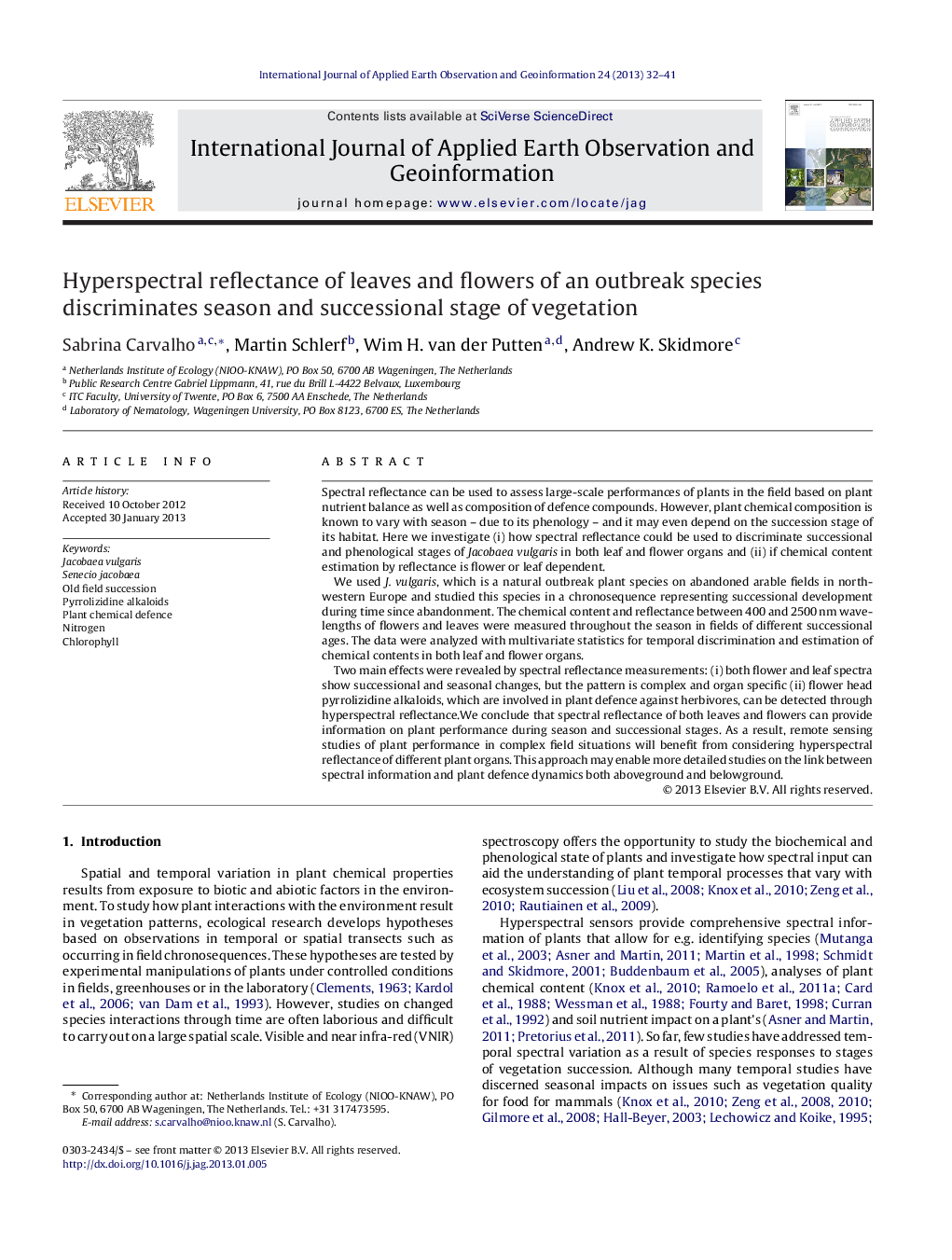| Article ID | Journal | Published Year | Pages | File Type |
|---|---|---|---|---|
| 4464797 | International Journal of Applied Earth Observation and Geoinformation | 2013 | 10 Pages |
Spectral reflectance can be used to assess large-scale performances of plants in the field based on plant nutrient balance as well as composition of defence compounds. However, plant chemical composition is known to vary with season – due to its phenology – and it may even depend on the succession stage of its habitat. Here we investigate (i) how spectral reflectance could be used to discriminate successional and phenological stages of Jacobaea vulgaris in both leaf and flower organs and (ii) if chemical content estimation by reflectance is flower or leaf dependent.We used J. vulgaris, which is a natural outbreak plant species on abandoned arable fields in north-western Europe and studied this species in a chronosequence representing successional development during time since abandonment. The chemical content and reflectance between 400 and 2500 nm wavelengths of flowers and leaves were measured throughout the season in fields of different successional ages. The data were analyzed with multivariate statistics for temporal discrimination and estimation of chemical contents in both leaf and flower organs.Two main effects were revealed by spectral reflectance measurements: (i) both flower and leaf spectra show successional and seasonal changes, but the pattern is complex and organ specific (ii) flower head pyrrolizidine alkaloids, which are involved in plant defence against herbivores, can be detected through hyperspectral reflectance.We conclude that spectral reflectance of both leaves and flowers can provide information on plant performance during season and successional stages. As a result, remote sensing studies of plant performance in complex field situations will benefit from considering hyperspectral reflectance of different plant organs. This approach may enable more detailed studies on the link between spectral information and plant defence dynamics both aboveground and belowground.
► Study on spectral seasonal and succession stage discrimination in flower and leaves. ► Analyzed the specificity of the organs for chemical concentration estimation. ► Reflectance is sensitive to organ temporal variation. ► Both leaves and flowers reflectance provided important temporal information. ► Monitoring plants in the field should consider time and organ.
